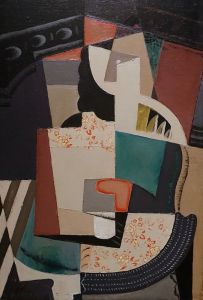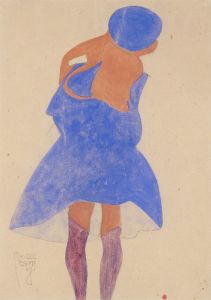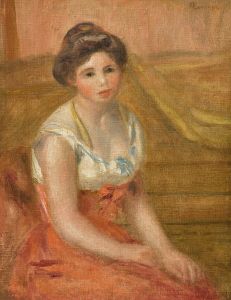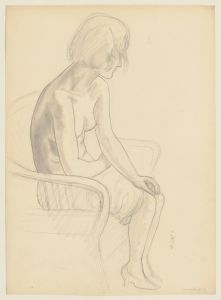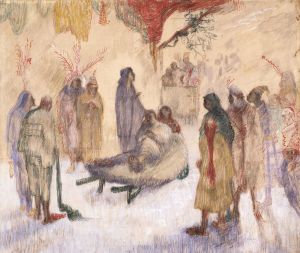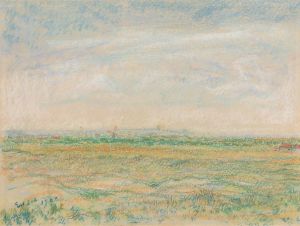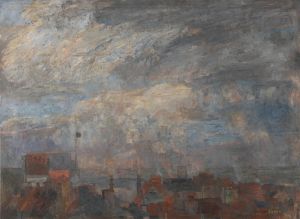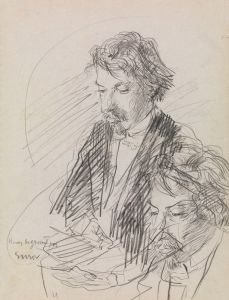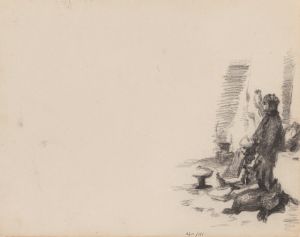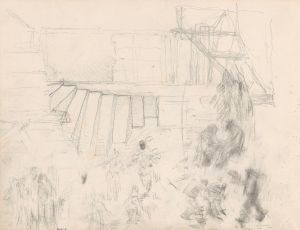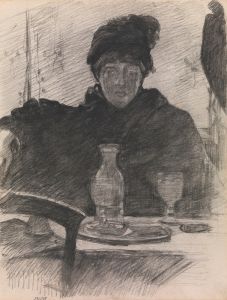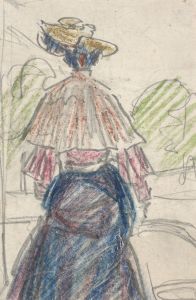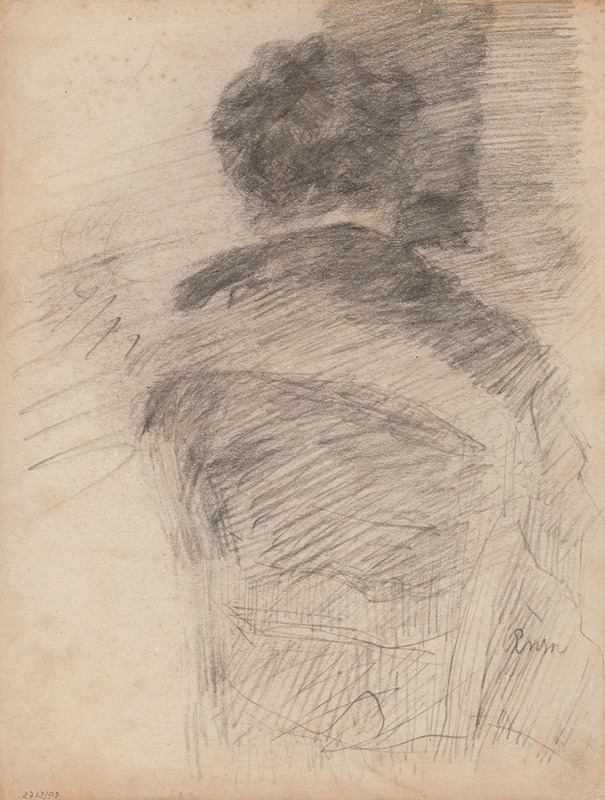
Seated Woman Seen from the Back
A hand-painted replica of James Ensor’s masterpiece Seated Woman Seen from the Back, meticulously crafted by professional artists to capture the true essence of the original. Each piece is created with museum-quality canvas and rare mineral pigments, carefully painted by experienced artists with delicate brushstrokes and rich, layered colors to perfectly recreate the texture of the original artwork. Unlike machine-printed reproductions, this hand-painted version brings the painting to life, infused with the artist’s emotions and skill in every stroke. Whether for personal collection or home decoration, it instantly elevates the artistic atmosphere of any space.
"Seated Woman Seen from the Back" is a painting by the Belgian artist James Ensor, created in 1887. Ensor, born in 1860 in Ostend, Belgium, was a prominent figure in the Symbolist movement and is known for his unique and often provocative style that blends elements of realism, impressionism, and expressionism.
The painting depicts a woman seated with her back to the viewer, a perspective that invites curiosity and introspection. The composition is simple yet evocative, focusing on the contours and posture of the woman rather than her facial features or expressions. This choice of perspective is relatively uncommon and adds a layer of mystery to the artwork, as the viewer is left to imagine the woman's identity and emotions.
Ensor's use of color and light in "Seated Woman Seen from the Back" is notable. The palette is subdued, with earthy tones dominating the scene. The brushwork is loose and expressive, characteristic of Ensor's style during this period. The background is minimally detailed, ensuring that the viewer's attention remains on the central figure. This technique also creates a sense of depth and space, enhancing the overall composition.
James Ensor's work often reflects his fascination with the human condition, societal norms, and the macabre. While "Seated Woman Seen from the Back" is less overtly grotesque than some of his other works, it still embodies his interest in exploring unconventional perspectives and the inner lives of his subjects. The painting can be seen as a study in anonymity and introspection, themes that recur throughout Ensor's oeuvre.
Ensor's career was marked by a departure from traditional artistic conventions, and he often faced criticism from contemporary critics. However, his innovative approach eventually earned him recognition and acclaim. By the early 20th century, Ensor was celebrated as a pioneer of modern art, influencing subsequent generations of artists.
"Seated Woman Seen from the Back" is part of Ensor's broader body of work that includes paintings, drawings, and prints. His most famous piece, "The Entry of Christ into Brussels in 1889," exemplifies his bold and imaginative style. While "Seated Woman Seen from the Back" is more subdued, it still showcases Ensor's skill in capturing the essence of his subjects through unconventional means.
Today, James Ensor's works are held in high regard and can be found in major museums and collections worldwide. "Seated Woman Seen from the Back" contributes to our understanding of Ensor's artistic development and his exploration of human psychology and societal themes. The painting remains a testament to Ensor's ability to convey complex emotions and narratives through simple yet powerful imagery.





